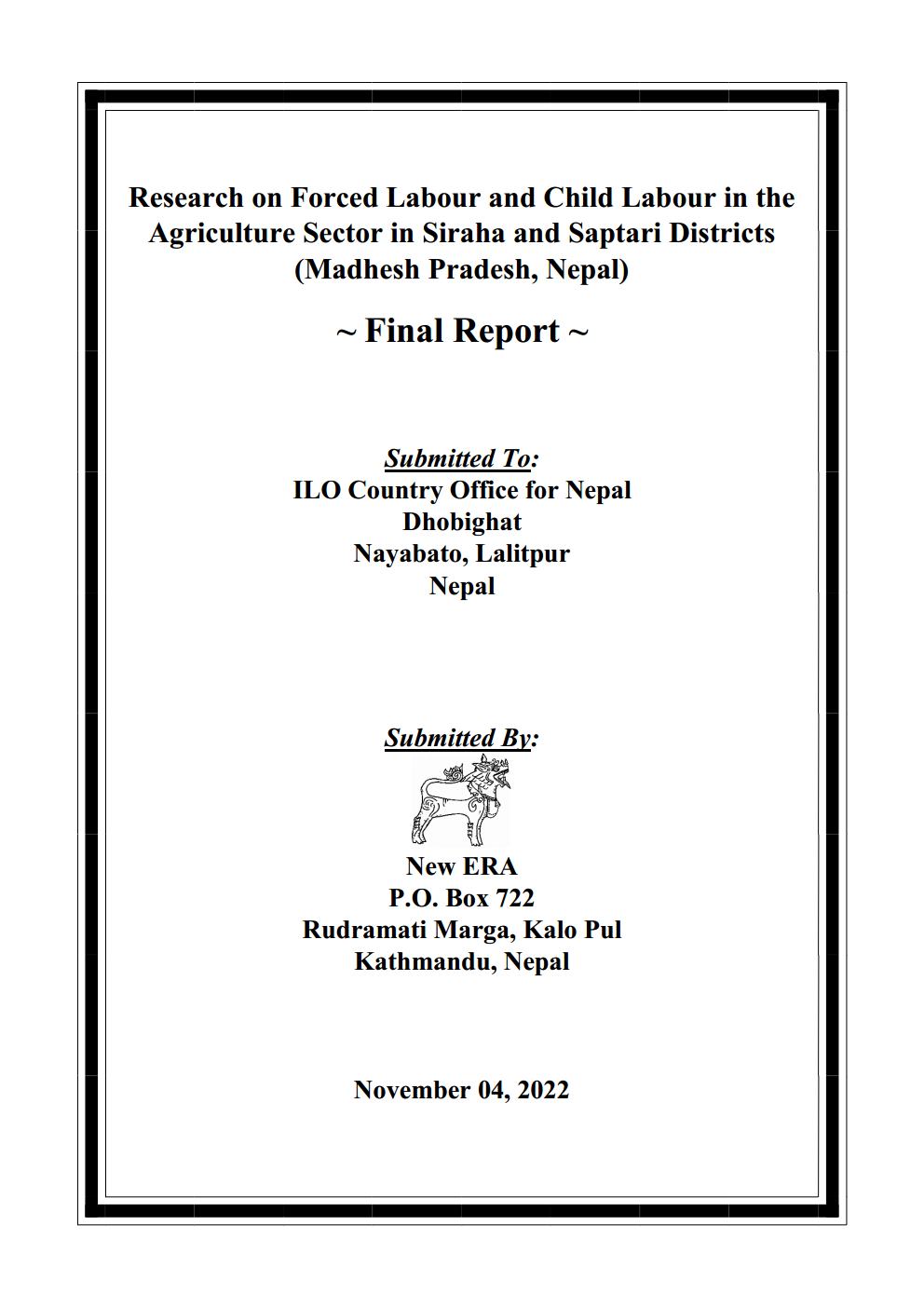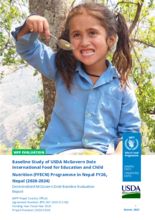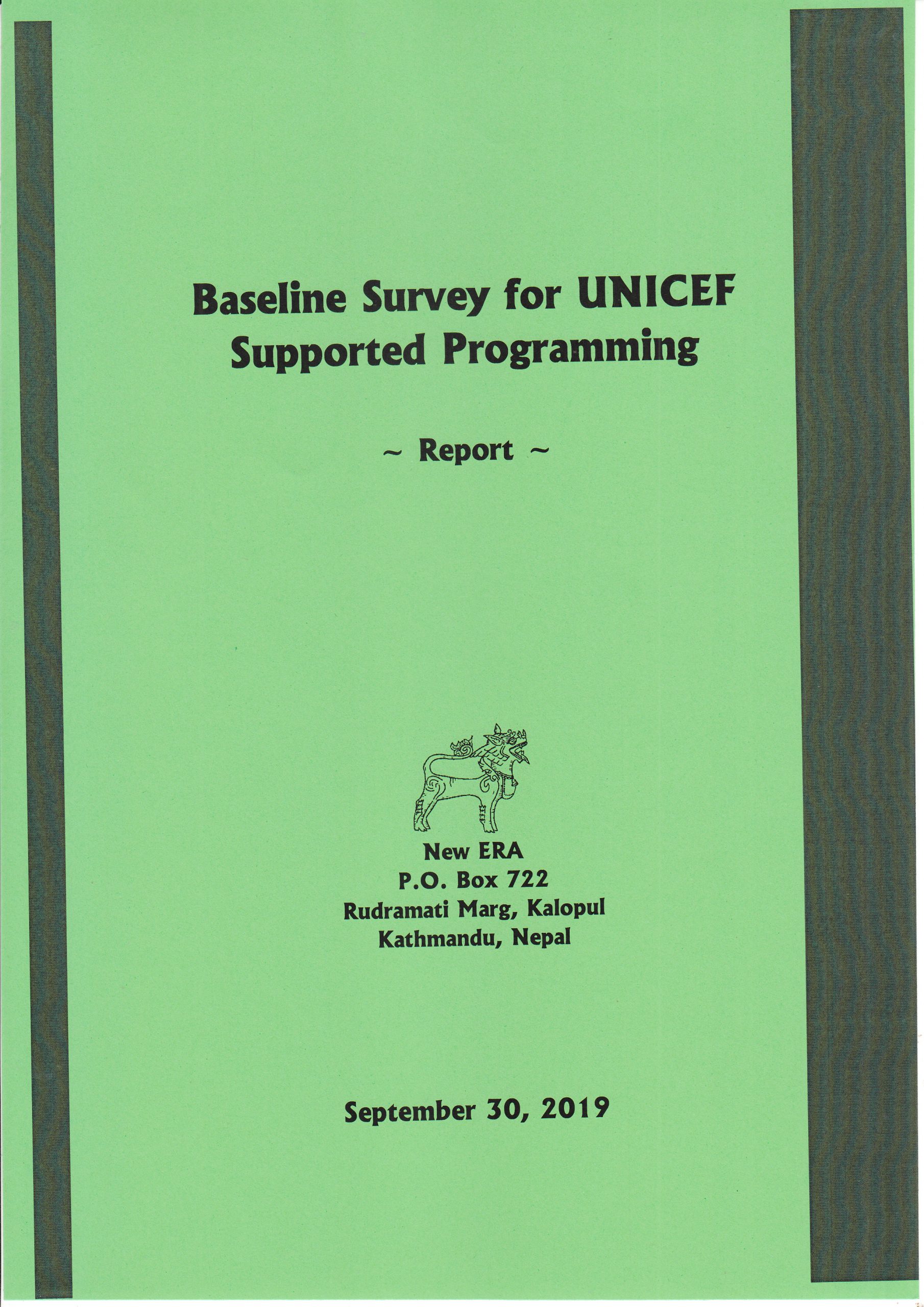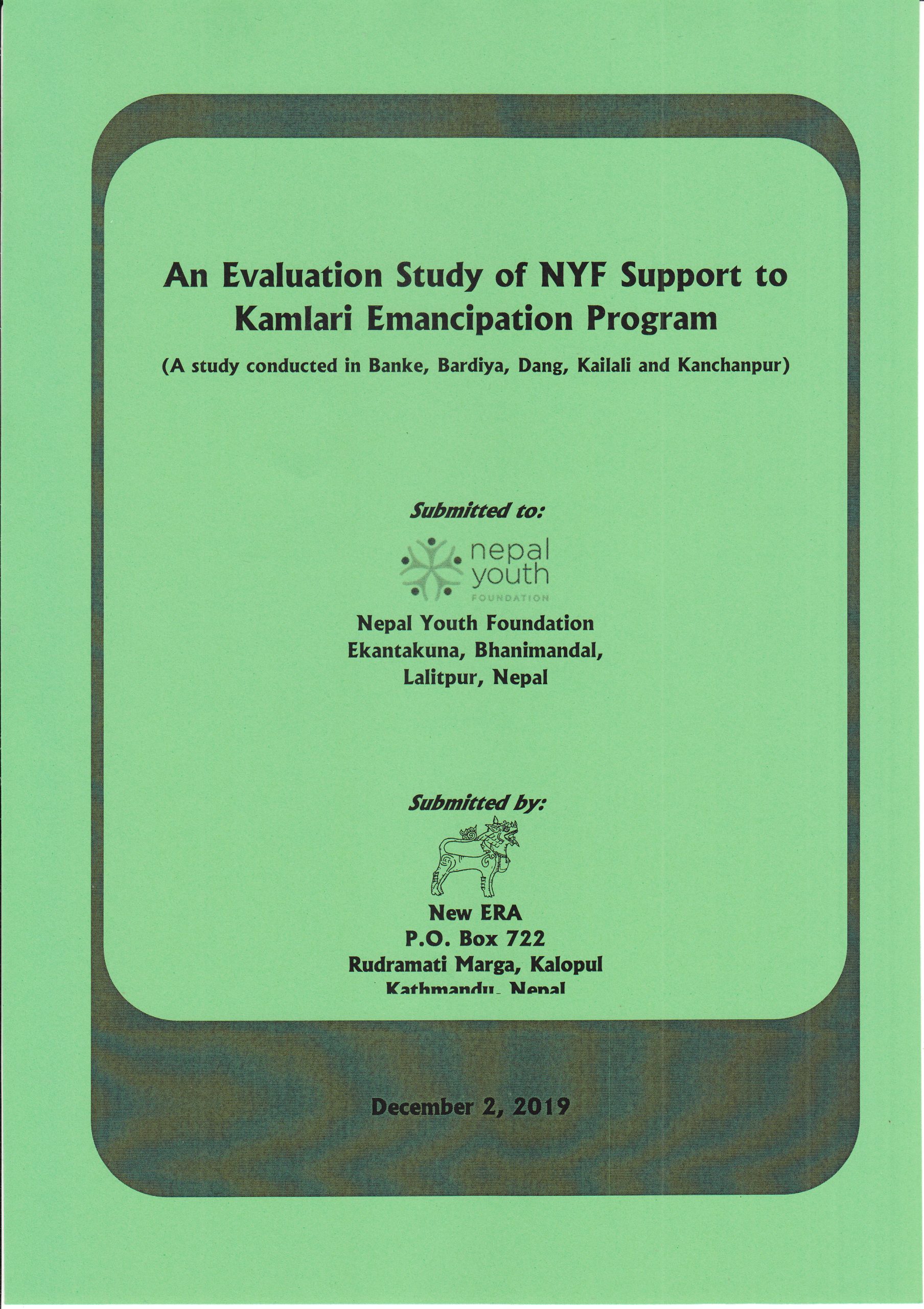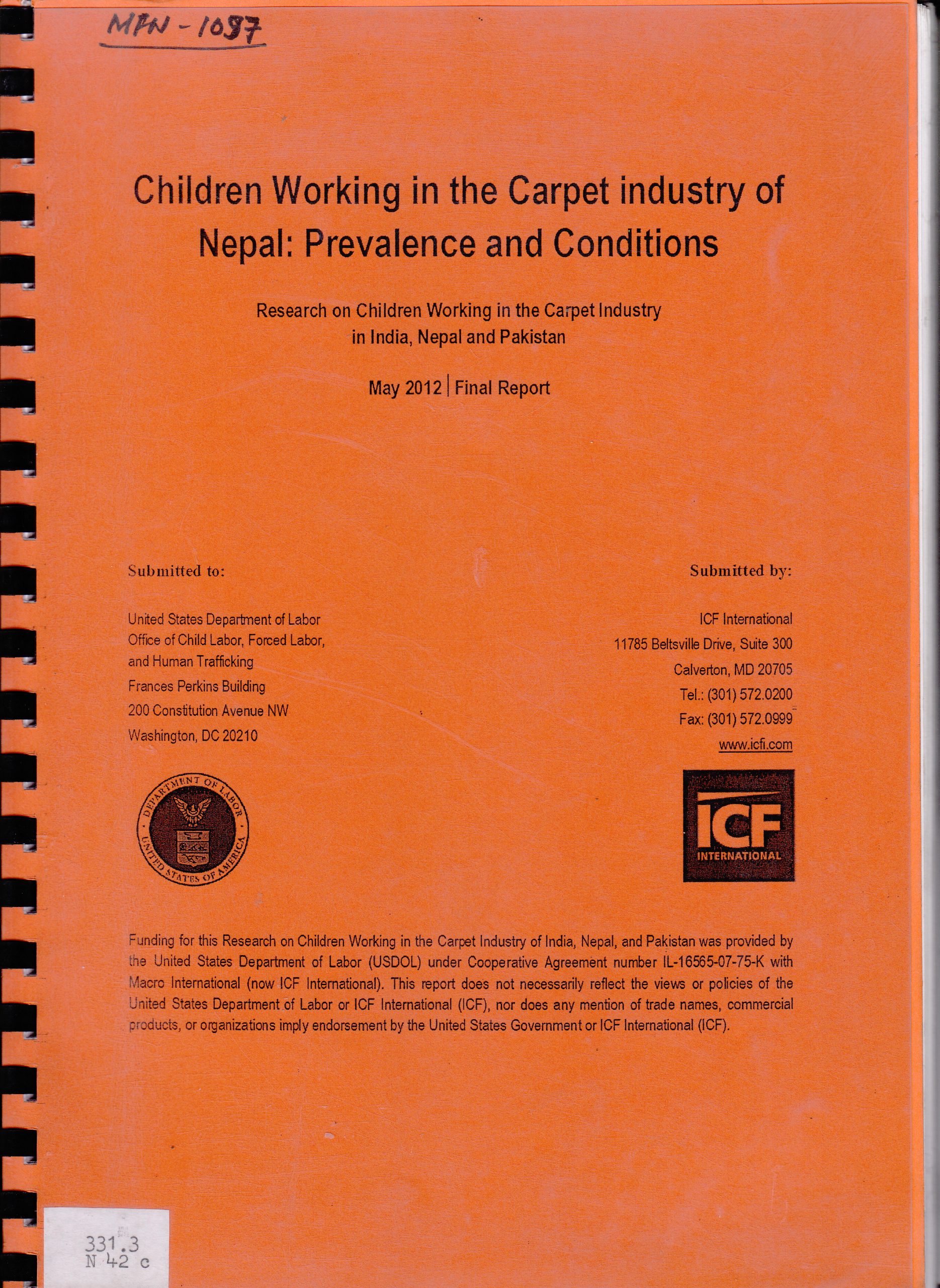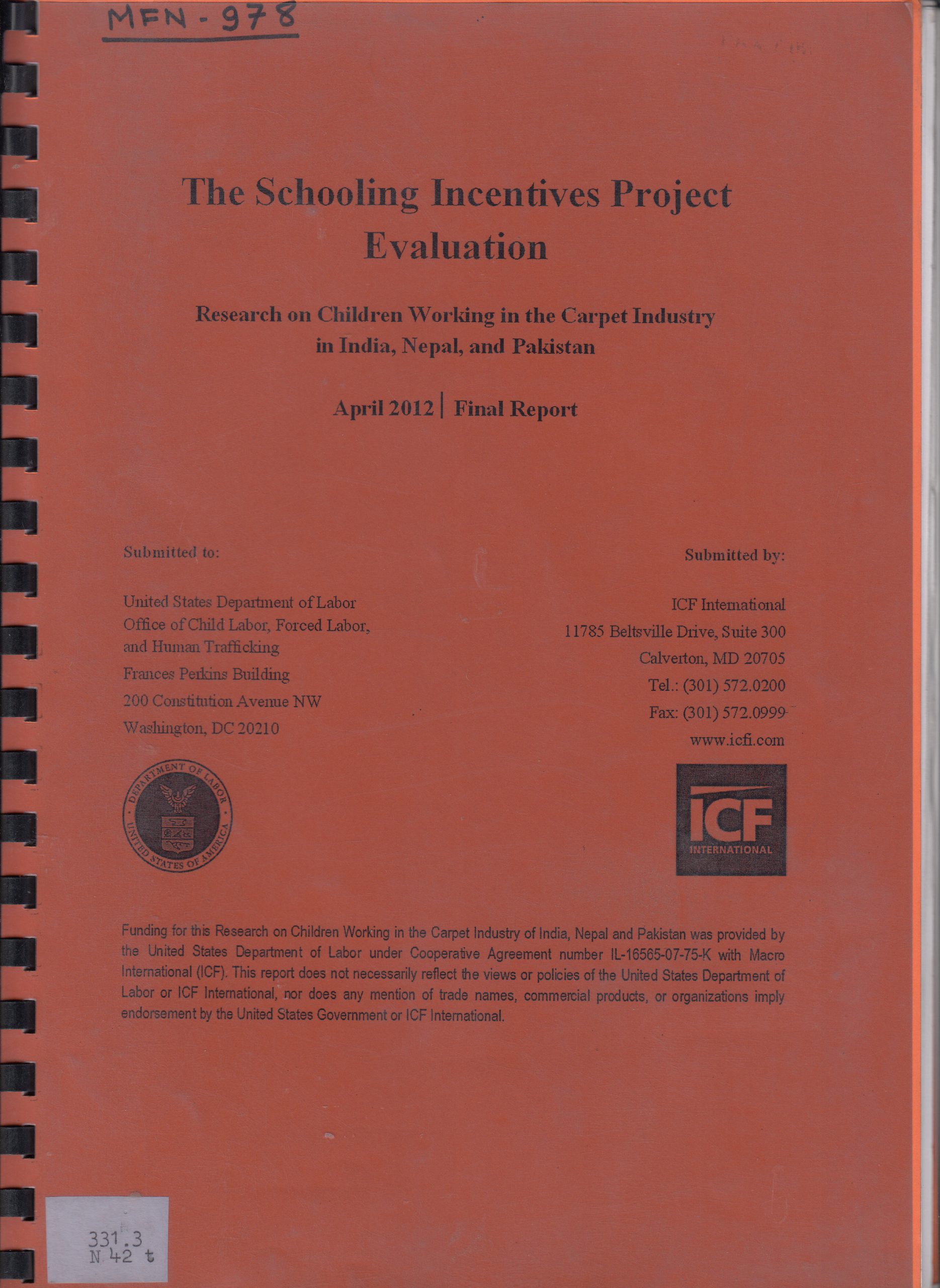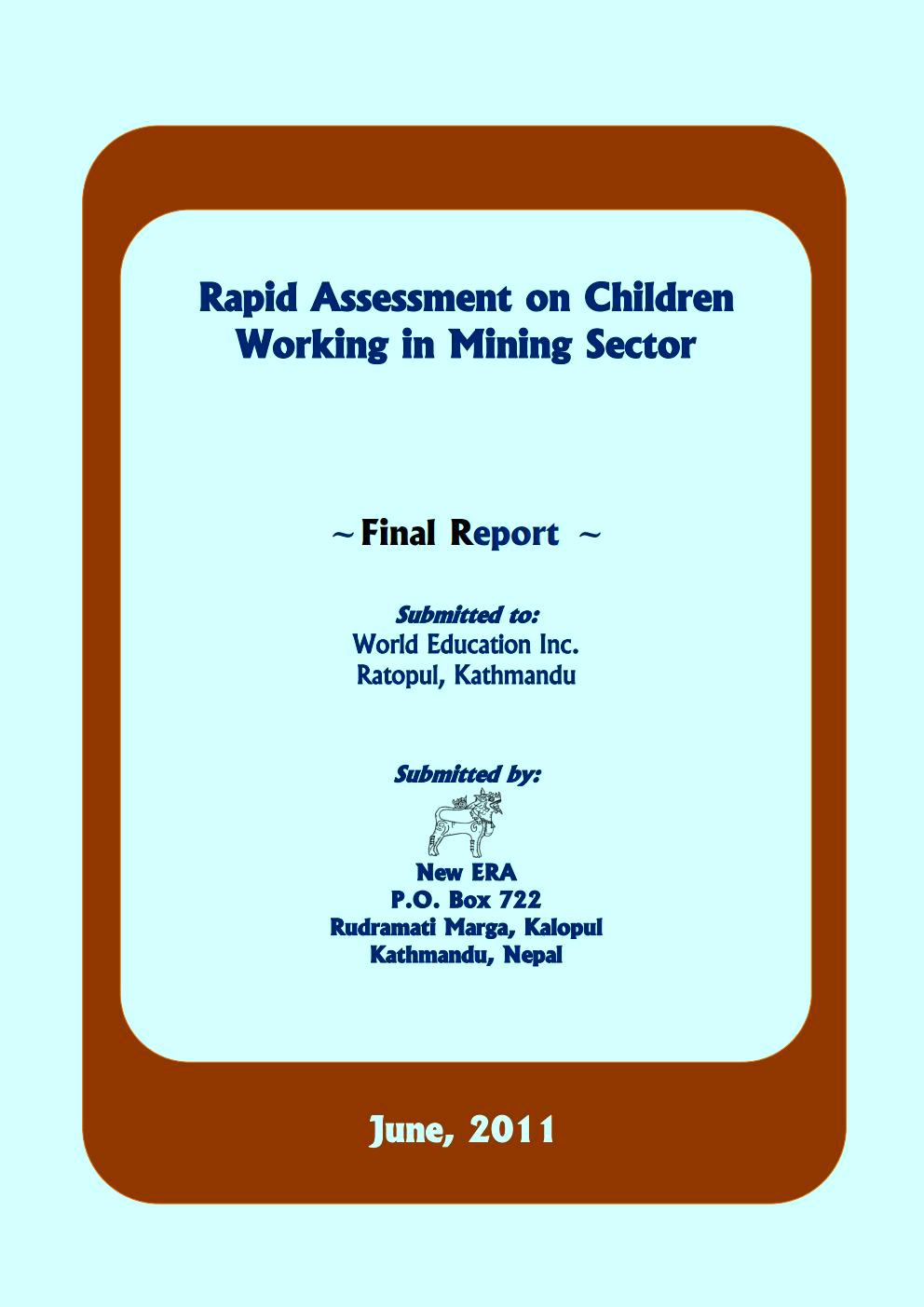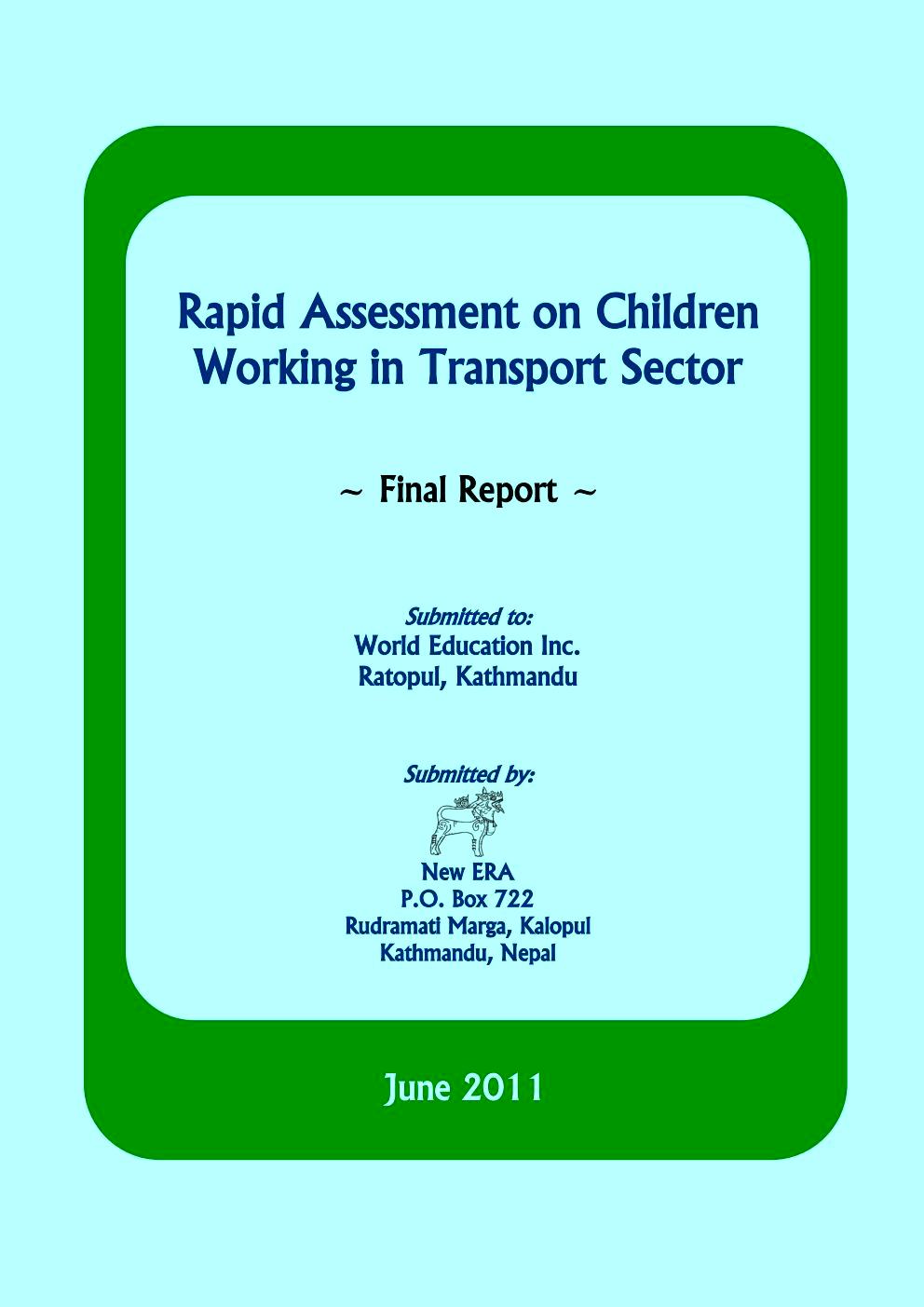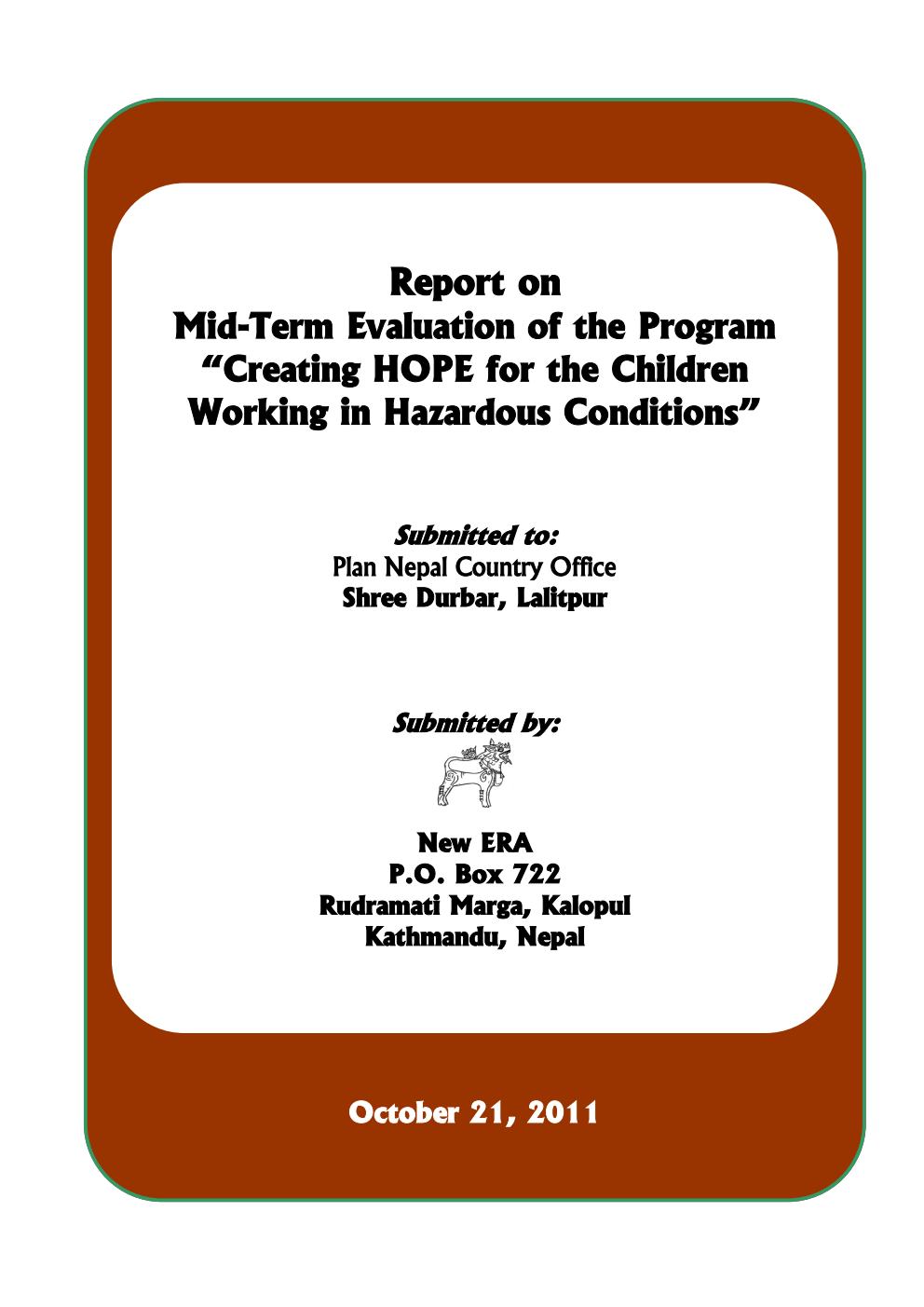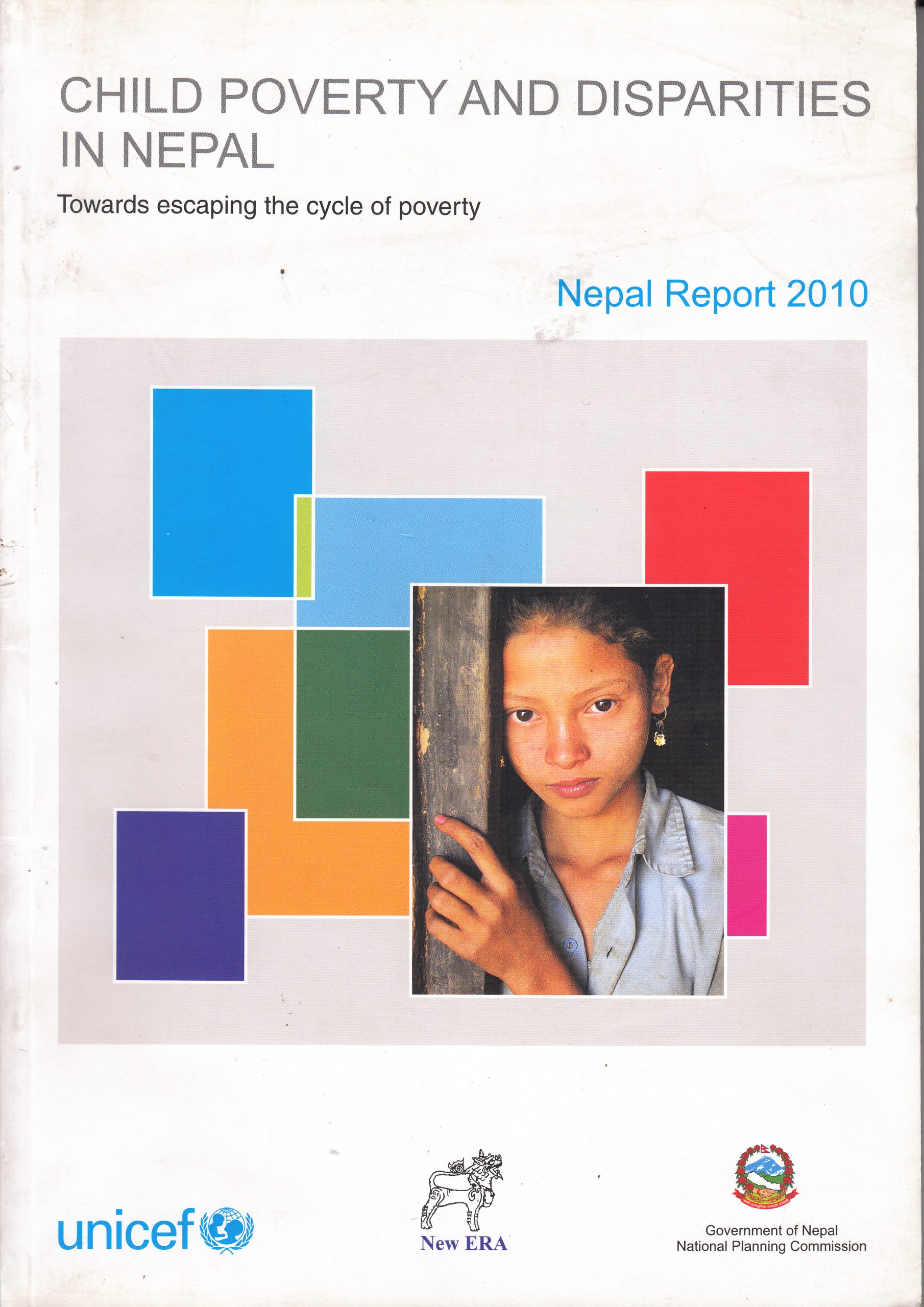The study funded by the International Labour Organization (ILO) Country Office for Nepal, provided insight into the prevalence of forced labour against the haruwa-charuwa communities in two districts of east Nepal- Siraha and Saptari, with a specific focus on child labour. The study answered how the onslaught of the COVID-19 has shaped the response to the pandemic amongst haruwa-cheruwa households in the districts of Siraha and Saptari, and the intensity of impact on child labour. The study further strengthened the evidence based on Child Labour (CL) and Forced Labour (FL) in the agricultural sector in selected districts in Siraha and Saptari of Province 2. It also explored the prevalence of CL and FL in agriculture and whether CL and FL are being practiced in isolated cases or is much larger in magnitude.
Report Type: Children
Baseline Survey of USDA McGovern-Dole International Food or Education and Child Nutrition Programme FY, Nepal (2020-2024)
The objective of this survey was to establish baseline indicator for (PMP) Performance Monitoring Plan. The study provided a situational analysis before the project begins, and the context necessary for the midterm and end-line evaluations to assess the project’s coherence, relevance, effectiveness, efficiency, sustainability, and impact. The study also explored the factors contributing to the literacy achievement of school-age children besides school meals and standard academic curriculum.
Baseline Survey for UNICEF Supported Palikas
The purpose of the survey was to establish baseline indicators to selected palikas of Nepal. The study will assess outcome, output and process indicators on quality of preschool and basic education; universal access to quality health services; well nourished; access to safe water and toilets at household level and good hygiene practices; access to quality maternal care of all mothers; living in safe, supportive and caring family environment; access to information, knowledge, skill and adolescent-responsive social services among adolescents people of 32 districts among 2, 5, 6 and 7 Provinces of Nepal.
An Evaluation Study of NYF Support to Kamlari Emancipation Program
The Kamlari program was implemented in Dang, Bardia, Banke, Kailali and Kanchanpur districts of Nepal with objective to eradicate the worst form of child labor and flagrant violation of child right. This study was to have an independent assessment of the achievements of NYF’s 20 years’ involvement in eradication of Kamlari practice which was prevalent among poor Tharu families in western Terai districts of Nepal. The study assessed the relevance; effectiveness; efficiency; sustainability social, economic and political impact on the lives of the Kamalaris of the program.
Children Working in the Carpet Industry of Nepal: Prevalence and Conditions
This Nepal chapter of Prevalence and Condition (PC) study is a part of report of “Research on Children Working in the Carpet Industry of India, Nepal and Pakistan”. The main objective of the study was to produce reliable, statistically sound and nationally representative estimated of the prevalence of working children and child labor in the carpet industry in Nepal. The study assesses children’s working conditions in the production process of carpet industry and compared living conditions of children working in the carpet industry and children working in the other industries in Nepal.
The Schooling Incentives Project Evaluation
Schooling Incentives Project (SIP) was implemented under the ‘Research on Children Working in the Carpet Industry in India, Nepal and Pakistan’ with funding of US Department of Labor. The main objective of the project was to encouraging school enrollment and attendance and reducing child labor especially in the carpet sector. This Nepal chapter study of SIP was to improve the understanding of importance of schooling costs and available employment opportunities for child labor and schooling decision among the children associated with carpet producing establishments in Nepal. The study assesses the impact of educational initiatives aimed at children vulnerable to child labor in Nepal.
Rapid Assessment on Children Working in Mining Sector
This study was designed to update information on the current situation of children engaged in the mining, especially in stone quarries sector in Nepal. The study assesses socio-economic status of child laborers, their families and communities, push and pull factors affecting children’s entry, migration, and work histories; nature and extent of hazardous and unhealthy working conditions in children work in the area; attitudes towards education of children and their parents; desire for rehabilitation; awareness on their rights and reasons that led them to work in this sector.
Rapid Assessment on Children Working in Transport Sector
This study was designed to update information on the current situation of children engaged in the transport sector. The study assesses socio-economic status of child laborers, their families and communities, push and pull factors affecting children’s entry, migration, and work histories; nature and extent of hazardous and unhealthy working conditions in children work in the area; attitudes towards education of children and their parents; desire for rehabilitation; awareness on their rights and reasons that led them to work in this sector.
Mid-Term Evaluation of the Program “Creating HOPE FOR THE Children Woprking in Hazardous Conditions
“Creating HOPE for Children Working in Hazardous Conditions” project was implemented by Plan Nepal with funding support from Japan National Office (JNO) in three districts, namely, Morang, Sunsari, and Makwanpur, with the goal to contribute in preventing and protecting working children from violence, abuse, and exploitation; and to create a safe working environment; free from the worst forms of child labor in project districts. This mid-term evaluation survey aimed to evaluate the progress towards achieving the project goals. The study assesses the alignment of project implementation with the strategies; awareness among children, families, concerned stakeholders, and employers about the promotion and protection of the rights of working children; capacity development of the duty bearers, especially municipalities and concerned government line agencies, to monitor and protect at-risk children in their working areas.
Child Poverty and Disparities in Nepal
This study upholds in achieving the Millennium Development Goals (MDGs) which mark an international commitment to eradicate extreme poverty and hunger and to foster global collaboration for development. As part of this effort, this study was carried out in 40 countries and seven regions in 2007-2008 with UNICEF support. The study proposes a comprehensive approach that focuses on poverty through a progressively specific analytical lens. First, the study looks at gaps and opportunities in national poverty reduction strategies, including the demographic and economic context, employment, public and private social expenditures, fiscal space and foreign aid. Second, the study focuses on the poverty and disadvantages faced by families with children – a crucial agenda to address.



